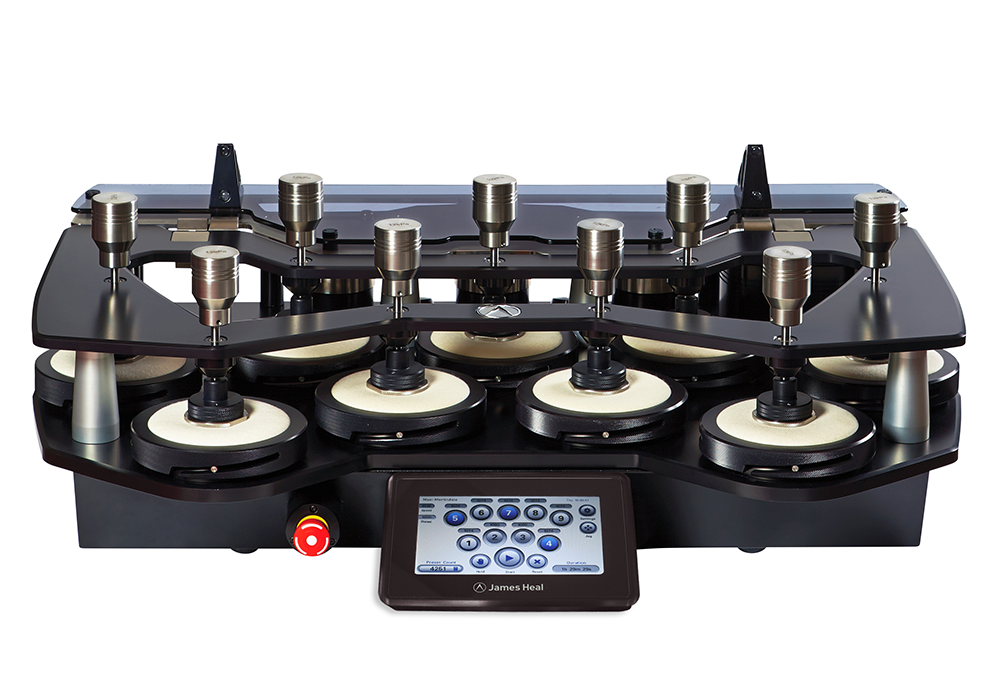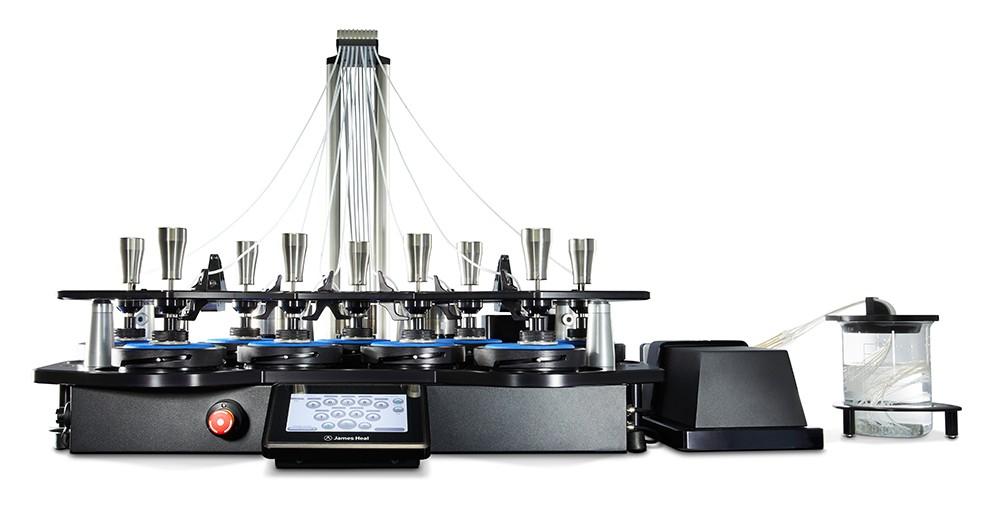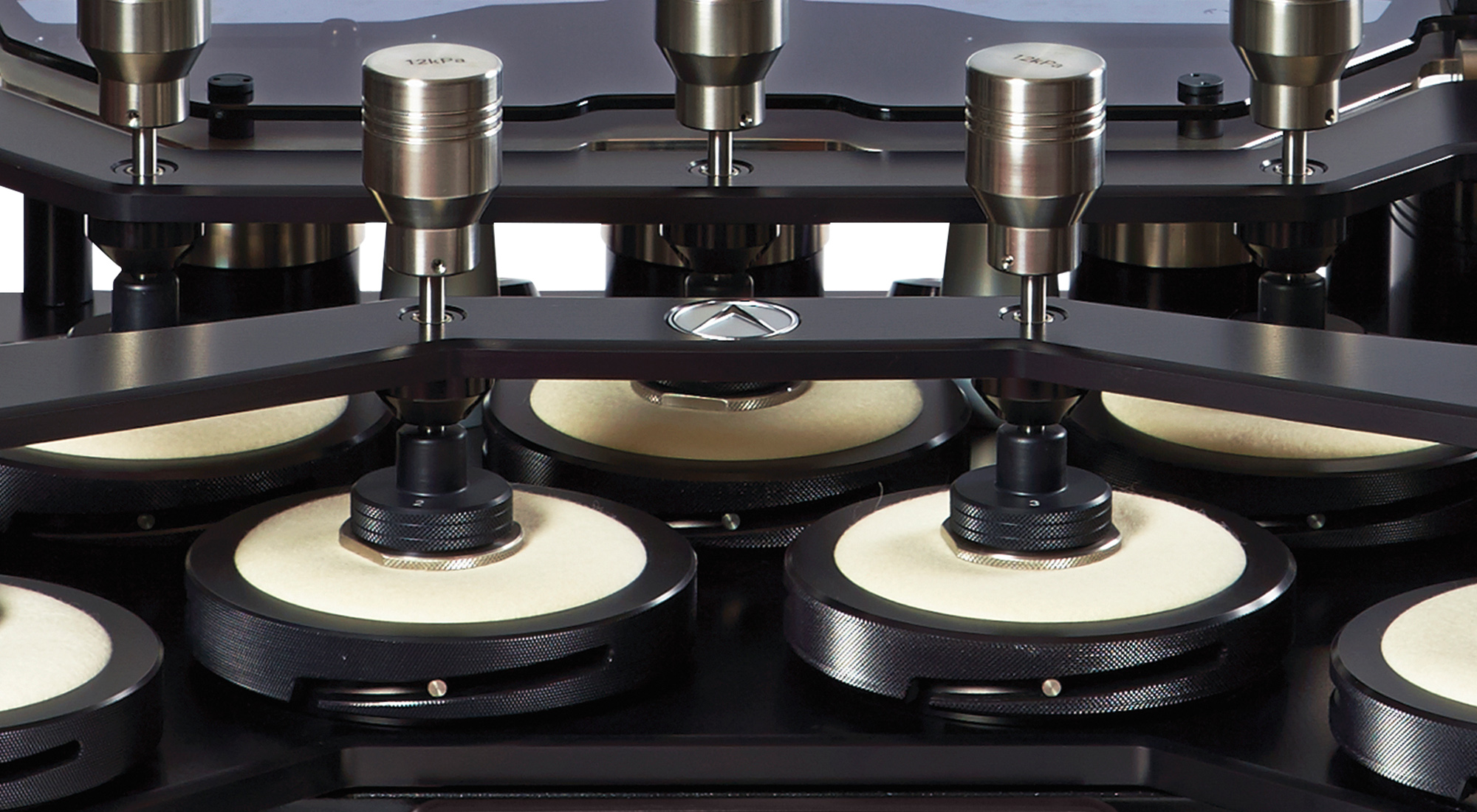The Martindale is a testing instrument that is used to assess the abrasion resistance and fabric pilling of textiles.
Abrasion resistance is used to test how resistant a fabric is against other materials after experiencing constant friction.
Pilling is the forming of fibres on clothes that develop on areas of clothing that receive the most abrasion during everyday wear.
James Heal was instrumental in the development of the original Martindale instrument in the 1940's and since then, there have been many variations of the instrument created to complete abrasion and pilling tests consistently and reliably. Learn more about James Heal's involvement in the History of the Martindale.
Testing the abrasion and pilling of a fabric is extremely important as it ensures quality and consistency within clothing for manufacturers. The Martindale performs reliable and repeatable tests that can be used to analyse defaults or issues with the fabric before it is manufactured.
Whilst completing a Martindale test, there are several phrases you may come across which are part of the testing process, this article will help you understand what each phrase means and how it is related to the testing procedure.

What is a rub?
- A rub is one revolution of the two outer drives of the Martindale. This is what is counted in the software to show how many rubs have been completed.
What is a cycle?
- A cycle is the completion of all the translational abrasion movements tracing a Lissajous figure, comprising of 16 rubs.
What is a Lissajous pattern?
- A Lissajous is any one of an infinite variety of curves traced out by a point which undergoes two simple motions in perpendicular directions. On a Martindale, the heads move in a Lissajous pattern, which is created by 16 rubs and has a total Length of 3.02m.
You can see in the picture below, the motion of the Lissajous, using the James Heal calibration pen.
What test materials and consumables are used on the Martindale?
- There are a number test materials and consumables used for abrasion and pilling tests on the Martindale, but the main three include SM25 Abrasive Cloth, Wool Felt Pads, and Polyurethane Blue Foam.
These materials are critical for use in abrasion testing. The SM25 Abrasive Cloth for instance, is used to apply a universal abrasive reference against the specimens being tested, to ensure continuity and quality control between tests. The Wool Felt Pads and Blue Foam Pads are used as padding for most general textile specimens, to aide in an effective grip of the abrasive cloth and the specimen, ensuring that no metal parts of the instrument or test heads are rubbing together.
Where is the end point?
- A common end point for testing many fabrics is 20,000 rubs. After this number of rubs the instrument will have completed 1,250 Lissajous figures totalling a length of 3776.25 metres. This is the equivalent to the:
- Length of 682 Ford Transit vans
- Length of 75 Olympic swimming pools
- Height of 39 Big Bens
- Length of 37 football pitches
- Summit of Mount Fuji
What are photographic standards?
- Photographic standards are used for the assessment of results. Tested samples are usually graded by one or more Technicians against photographic standards. This is a visual check of tested fabric specimens for comparison against photographs of standard grades of pilling. James Heal's Proview Universal Assessment Viewer with its suite of digital grading photographs, can be used for easy and efficient grading, promoting greater consistency in evaluation by Technicians. Read more on the benefits of digital photographic assessment.
Peter Goodwin - Technical SpecialistThe Martindale is one of James Heal's core products and helps customers easily understand the abrasion and pilling resistance on fabrics.
The James Heal Martindale is available in three standard models with 2, 5 or 9 stations, depending on the size and requirements of the laboratory. All are equipped with abrasion and pilling test kits, used on applications such as textiles, socks, leather, coated fabrics, soiling, and more, to suit customer testing needs.
In addition, AquAbrasion is a wet Martindale 9-station model, which can be used for both wet and dry testing to gain an understanding of how textiles and coatings are affected by wearing when wet, for example outdoor wear such as a raincoat, workwear, or swimwear. Further insights into this interesting topic can be found in our article on Assessing the true impact of the outdoors on outdoor wear.

DurAbrasion, available as a 2 or 5 station Martindale, offers the versatility of different abrading tables and accessories to create a bespoke instrument to test anything from apparel to automotive components, wood and laminates, coatings, paints and more.
Discover the full James Heal Martindale range here.











